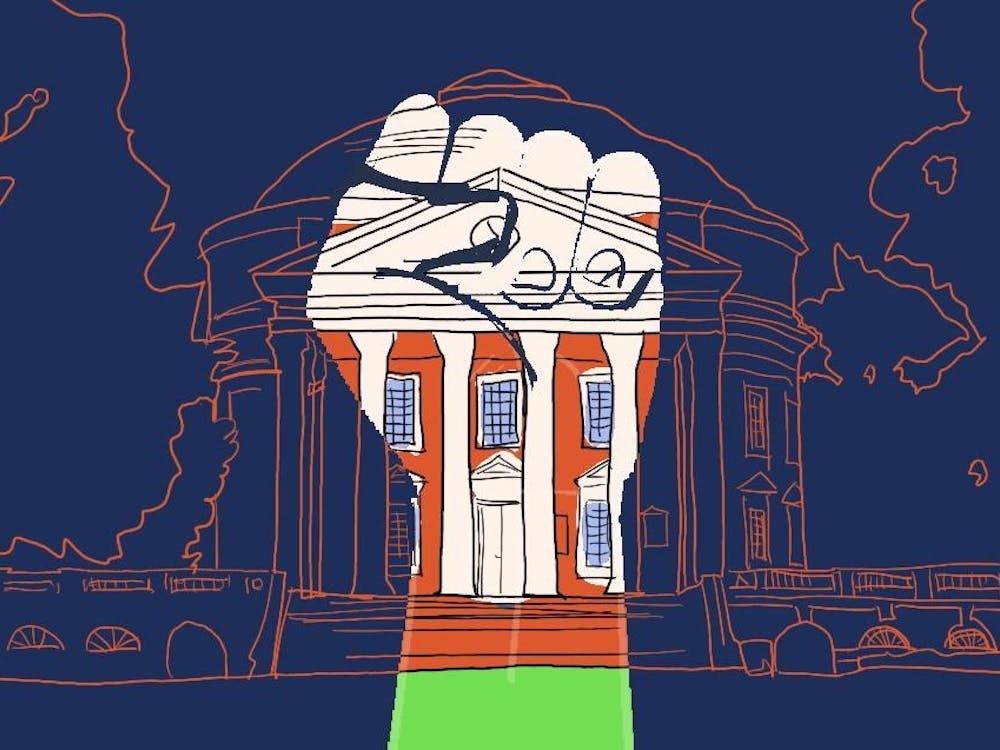Recently, Viewpoint writer Tsering Say wrote a column titled “Close Balz Dobie” in which she claims, among other things, that the University “cloister[s] their scholars into a single, homogenous dorm.” Since the article does not qualify its claim against Balz-Dobie by saying “mostly” or “somewhat” homogenous, it misrepresents Balz-Dobie as an elitist and sequestered community lacking diversity. In general, the article’s perception of honor students lacks an objective viewpoint. It draws its conclusion from subjective assumptions about the University’s honors community.
To prove this point, we will illustrate the fallacies in this article’s logic and perspective with an comparison between anonymous, non-compulsory census of Balz-Dobie residents (students and resident advisors alike), as well as University demographic statistics. Not all results could be featured in this article.
1. Scholars sequester themselves in Balz-Dobie, with the ostensible intention to live with like-minded people.
In actuality, Balz-Dobie residents interact with people outside of our dorm just as residents of other dormitories do. We go to classes and we meet people in a variety of clubs. In only looking at GPA correlation, Say suggests we have ulterior motives, but it’s a rational decision to live with people whom have been shown to share your interests.
The article also refers to Balz-Dobie as “a special dormitory.” It seems that there is a belief that Balz-Dobie has more perks than other dorms. We have air-conditioning (like every other new dorm), roommate living arrangements (like every other new dorm) and we sit at the top of an obnoxiously steep hill far from the center of grounds (the only dorm which suffers more than we do in this regard is Kellogg). Our building is no more decorated than any other new dorm; we don’t have a PokeStop, but Kellogg does. So, when asked if Balz-Dobie is better in terms of its commodities and location, residents generally answered no (Graph A).
2. The scholar community lacks socioeconomic homogeneity.
Of all of the article’s allegations, this one may have been the most infuriating to a number of Balz-Dobie residents. It completely dismisses Balz-Dobie’s income distribution and devalues the presence of Balz-Dobie students under financial aid. Compared to the University’s overall demographic, the socioeconomic diversity is high, at least in comparison to other dorms. (Graphs B, C, and D).
Clearly, Balz does not represent the stereotyped upperclass student. It attracts those who are of various socioeconomic statuses. No matter how you spin it, these statistics in no way support this accusation of socioeconomic homogeneity.
In addition, the article doesn’t mention other crucial factors that have even stronger correlation with academic success: hard work, passion and commitment. Wealthy students indeed have access to private education and more extracurricular activities; however, as evidenced by the socioeconomic diversity graphs, other crucial factors like ones mentioned must determine Balz-Dobie’s composition.
3. If the Echols program is truly looking for curious, risk-taking pioneers, cloistering their scholars into a single, homogenous dorm seems counterintuitive.
Simply untrue. Balz-Dobie is an exceedingly diverse microcosm on Grounds (Graphs E through H). In reflecting upon these statistics, please take into account that Echols/Rodman students can opt out of living in Balz-Dobie as well. A number of factors may contribute to students choosing to opt out, not the least of which being speculations proposed by “Close Balz-Dobie.” Fallacious opinions like those in the article advance the preconception that Balz-Dobie has an unwelcoming atmosphere. Furthering this detrimental rhetoric can only dissuade minorities from opting into Balz-Dobie, which in turn perpetuates the vicious cycle. If we want Balz-Dobie to be more diverse, we cannot scare away exceptional minority students with these unfounded claims. As far as we can tell, the University already gets us halfway there by distinguishing a proportionate number of students from diverse backgrounds.
4. Disseminating honor students throughout the dorms can foster a shared sense of purpose, standing and community.
Living in a scholarly community can indeed reinforce sub-group identification, but self-identification is a personal choice we should respect. One should consider that the very existence of a scholar program without honor dormitories makes people think they are special. It depends not only on living environment but also on his ideals and mindset. Here we call for proactive measures. The Fireside Chat Committee of Echols Council could invite psychology professors to give a talk on avoiding elitism. The First Year Council could promote inter-dormitory activities.
I (Wells) would like to juxtapose two anecdotes. At the start of the semester, someone asked me how I became an Echols Scholar. She followed up the question, asking, “Did you buy your way in?” I said nothing but replied with an awkward smile. In my first class of college, an upperclassman asked me where I lived, and I said “Balz.” He then shook my hand, saying, “It’s very nice to meet you!” The perception of honor students is less about honor students, but more about how people pass judgment on people they don’t even know.
In reality, Balz-Dobie students are like any other student at the University. Naturally, the atmosphere of Balz is different from year to year. As residents for 2016-17 year, we can only speak for our class. In the past eight weeks, we have been grateful for our fellow residents’ warmth, support and unity. If you want to know the truth for yourself, we invite you to stop by the so-called “Ivory Tower” and have a five minute conversation with any current Balz-Dobie resident.
Kristen Barrett and Wells Tu are first-year College students.







